Rocky Mountain |
|||||||||||||||||||
 |
 |
||||||||||||||||||
Set consists of: Knitted DROPS hat and mittens in ”Snow” or “Andes” with fur edge in “Puddel”.
DROPS 134-10 |
|||||||||||||||||||
|
HAT: GARTER ST (back and forth on needle): K all rows. PATTERN: See diagram M.1. The diagram shows all rows in pattern seen from RS. -------------------------------------------------------- HAT: Worked back and forth on needle. Beg with middle part of the head and finish with the ear flaps in each side. Cast on 26 sts with Snow on needle size 7mm / US 10½ (includes 2 edge sts in garter st). Work 1st row (= RS) as follows: 1 st in garter st - See explanation above, work diagram M.1, finish with 1 st in garter st. Continue like this. When diagram M.1 has been worked 3 times vertically, insert a marker at the beg and end of next row (= 1st row in diagram M.1). When diagram M.1 has been worked 5 times vertically, insert another marker at the beg and end of next row (= 1st row in diagram M.1). Continue until diagram M.1 has been worked a total of 8 times vertically, piece should now measure 40 cm/15¾", loosely bind off all sts. EAR FLAP: Worked with Snow on needle size 5 mm / US 8 (to get a nicer row at the beg) as follows: Knit up 14 sts evenly from RS along the edge between the 2 markers in one side of piece. Work next row (= WS) as follows: 1 st in garter st, K 3, P 2, K 2, P 2, K 3, 1 st in garter st. On next row, switch to needle size 7mm / US 10½ and work: 1 st in garter st, work diagram M.2, finish with 1 st in garter st. Continue to work diagram M.2 (with 1 st in garter st in each side). When diagram M.2 has been worked 3 times vertically, inc 1 st in each side on next row from RS (1st row in diagram M.2) as follows: 1 st in garter st, make a YO, work diagram M.2, make a YO, finish with 1 st in garter st. On next row from WS, P the YOs twisted (i.e. in back loop of st instead of front to avoid holes). K the new sts from RS and P the new sts from WS in each side. Continue until diagram M.2 has been worked 4 times vertically. Then work 1st and 2nd row in diagram M.2, then bind off 1 st at beg of next row from RS (3rd row in diagram M.2) as follows: * work 2 sts, pass the first st over, work the rest of row *. Repeat from *-* 5 more rows, diagram M.2 has now been worked a total of 5 times. Then bind off all sts while AT THE SAME TIME working 1st row in diagram M.2. Work another ear flap the same way in the other side of piece. ASSEMBLY: Sew tog ear flaps and middle part in each side inside 1 edge st. FUR EDGE: Crochet along the bottom edge in outer loops of edge sts from RS. NOTE: Do not crochet too tight. Crochet with 2 strands Puddel with hook size 8 mm / L/11 as follows: ROW 1 (= RS): Beg in the corner where left ear flap beg (marked with arrow in diagram), work sc around left ear flap, around the back part and around the entire right ear flap, turn piece. ROW 2 (= WS): ch 1, then work 1 sc in every sc back to the beg. Then work 16 sc over the bottom edge mid front, finish row with 1 sl st in 1st sc on 2nd row (at right ear flap), turn piece. ROW 3-5: ch 1, sc in every sc mid front = 16 sc on row, turn piece. ROW 6: ch 1, skip 1st sc, 1 sc in next sc, 1 sc in every sc until 2 sc remain on row, skip next sc, 1 sc in last sc = 14 sc, turn piece. ROW 7: ch 1, skip 1st sc, 1 sc in next sc, 1 sc in every sc until 2 dc remain on row, skip next sc, 1 sc in last sc = 12 sc, turn piece. ROW 8: ch 1, skip 1st sc, 1 sc in next sc, 1 sc in every sc until 2 sc remain on row, skip next sc, 1 sc in last sc = 10 sc, finish with 1 sl st in the last sc. Fasten off. Fold the fur brim upwards over the hat and sew it tightly. Make 1 pompom of approx. 7 cm / 2¾" in diameter with Puddel. With Snow join at the bottom of the ear flap, make 1 tie by working ch for approx. 20 cm / 8". Place the end of the tie inside the pompom before cutting and tying around the pompom. Make another pompom and tie the same way in the other side. -------------------------------------------------------- MITTENS: INCREASE TIP: Inc 1 st by picking up the strand between 2 sts from previous round - K this st twisted, i.e. work in back loop of st instead of front to avoid hole. DECREASE TIP: Dec 1 st on each side of marker as follows: Work until 1 st remains before marker, slip next st on a cable needle behind the piece, slip next st (with marker) over to right needle, slip st from cable needle back on left needle, K 2 tog, psso = 2 sts dec. PATTERN: See diagram M.2 and M.3. The diagram shows the pattern from RS. -------------------------------------------------------- LEFT MITTEN: Worked in the round on double pointed needles. Cast on 24 sts on double pointed needles size 7mm / US 10½ with Snow. Work 1st round (= RS) as follows: K 12, work diagram M.2 (= 12 K sts and 12 sts from diagram M.2). REMEMBER THE GAUGE! Continue like this until piece measures 6 cm / 2⅜", then insert a marker in the 9th st. On next round, inc 1 st on each side of st with marker for thumb gusset - Read increase tip above. Repeat inc on each side of the inc sts on next round = 5 sts in thumb gusset. Work 2 rounds without inc. On next round slip the 5 thumb sts on a stitch holder - At the same time cast on 1 new st behind sts on stitch holder = 24 sts on round (12 K sts and 12 sts from diagram M.2). Insert 2 markers in the piece as follows (round beg with 1 K st): 1 marker in the 1st K st and 1 marker in the 12th K st. When diagram M.2 has been worked 3 times vertically, work next round as follows: K 12, work diagram M.3. After 4 rounds, dec 2 sts in each side of mitten - Read decrease tip above = 4 sts dec on round. Repeat dec on every round a total of 5 times = 4 sts remain. Cut the yarn and pull it through the remaining sts and tighten tog. THUMB: Slip the 5 thumb sts back on double pointed needles. Knit up 5 sts behind the thumb = 10 sts. Work in stockinette st in the round until thumb measures 5 cm / 2". Insert 2 markers in the thumb; one in the 1st st and one in the 6th st (= in each side). On next round, dec 2 sts in each side of thumb - Read decrease tip above = 4 sts dec on round. Repeat dec on next round = 2 sts remain. Cut the yarn and pull it through the remaining sts and tighten tog. RIGHT MITTEN: Cast on and work as left mitten but reversed. Insert marker in the 4th st for inc for thumb gusset. FUR EDGE: Crochet with 2 strands Puddel on crochet hook size 8mm / L/11. Work 1 sl st in cast on edge of mitten, ch 1, then work 18 sc around the edge, finish with 1 sl st in first sc. Then work 1 sc in every sc in the round until fur edge measures approx. 6 cm / 2½", fasten off. Work the same way on the other mitten. |
|||||||||||||||||||
Diagram explanations |
|||||||||||||||||||
|
|||||||||||||||||||
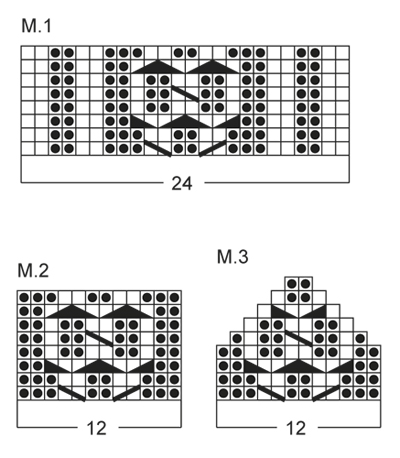
|
|||||||||||||||||||
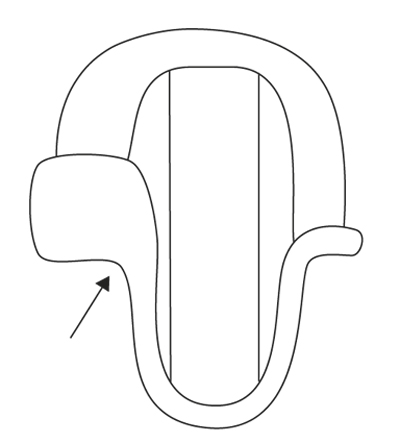
|
|||||||||||||||||||
|
Have you made this or any other of our designs? Tag your pictures in social media with #dropsdesign so we can see them! Do you need help with this pattern?You'll find tutorial videos, a Comments/Questions area and more by visiting the pattern on garnstudio.com. © 1982-2024 DROPS Design A/S. We reserve all rights. This document, including all its sub-sections, has copyrights. Read more about what you can do with our patterns at the bottom of each pattern on our site. |
|||||||||||||||||||










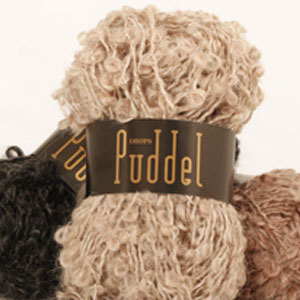


















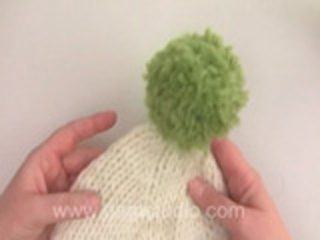







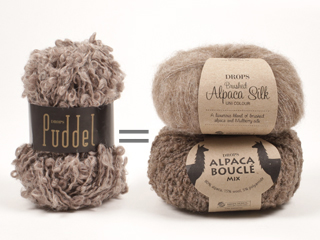


















Comments / Questions (99)
Je suis à la fin du cache oreilles je rabat une maille que d un côté au 3eme rang et je dois bien rabattre une seule maille aussi au 4 5 6 7 8 rangs je dois toujours garder la maille lisiere je rabats donc 6 mailles au total avant le final merci
02.02.2024 - 14:50DROPS Design answered:
Bonjour Mme Gourmelen, vous allez rabattre 1 maille au début de chaque rang lors des 6 derniers rangs, autrement dit, vous tricotez encore 5 fois ce rang en rabattant 1 maille au début de chacun de ces 5 rangs - vous aurez ainsi rabattu 3 fois 1 maille de chaque côté. Au rang suivant sur l'endroit, rabattez toutes les mailles en les tricotant comme le 1er rang de M.2. Bon tricot!
05.02.2024 - 07:47Bonjour au niveau du cache oreilles combien d augmentations on doit faire au total et si je fais les augmentation que sur le 1er rang de M2 ou sur tous les rangs endroit de M2 merci d avanc
30.01.2024 - 20:11DROPS Design answered:
Bonjour Mme Gourmelen, on n'augmente qu'une seule fois, cette augmentation n'est pas répétée. Bon tricot!
31.01.2024 - 08:31Bonjour pourriez vous m indiquer que représente le gros triangle noir sur le diagramme M1 il se trouve à la 11 mailles et au 3 ème rang la légende n indique pas ce symbole merci d avance
18.01.2024 - 17:47Bonjour sur le diagramme M1 que représente le grand triangle tout noir au 3eme rang du diagramme M1 il au milieu a la 11 mailles du début du diagramme il n'y a pas d indication sur la légende merci
18.01.2024 - 17:39DROPS Design answered:
Bonjour Mme Gourmelen, le triangle noir est en fait le dernier symbole puis l'avant-dernier symbole, autrement dit, ce triangle noir sur 4 cases se tricote en fait en 2 fois: d'abord une torsade sur 2 mailles puis une autre torsade sur 2 mailles. Bon tricot!
19.01.2024 - 08:59Bonjour, j'aimerais faire ce bonnet mais je vois que la laine PUDDEL ne se fait plus et vous conseillez la remplacer par Alpaca bouclé avec deux fils. S' il faut deux pelotes de PUDDEL, dois je prévoir 4 pelotes de Alpaca bouclé ? Il est difficile de faire une équivalence à partir d'une laine qui ne se fait plus car je ne sais pas quel métrage il y a dans une pelote de 50g PUDDEL.
13.09.2022 - 10:07DROPS Design answered:
Bonjour Suzy, vous pouvez effectivement remplacer 1 fil Puddel par 2 fils Alpaca Bouclé, utilisez notre convertisseur pour connaître la nouvelle quantité nécessaire; Bon tricot!
13.09.2022 - 12:05HOLA, PODRIAN DECIRME SI HACEN ENVIOS A MEXICO , ASI COMO LA FORMA DE PAGO Y EL MONTO DEL ENVÍO. ME INTERESAN LOS PRODUCTOS DE ESTE ROCKY MOUNTAIN Y OTROS. GRACIAS.
13.02.2022 - 22:44DROPS Design answered:
Hola Sandra, puedes ver en el siguiente link aquellas tiendas con envío a México: https://www.garnstudio.com/findastore.php?id=23&w=1&cid=23
19.02.2022 - 18:17Mam pytanie o nauszniki. Na końcu instrukcji "Zamknąć wszystkie o. W TYM SAMYM CZASIE, przer. 1-szy rz. schematu M.2.". Czy mogę prosić o wyjaśnienie o co chodzi? Jak można jednocześnie zamykać oczka i je przerabiać? Czy jest dostępny jakiś film instruktażowy wyjaśniający temat?
26.11.2021 - 00:05DROPS Design answered:
Witaj Paulino, zakańczasz robótkę NASTĘPUJĄCO, ale zamiast przerabiać oczka prawe jak na filmie, będziesz przerabiać 1-szy rząd schematu M2. Pozdrawiamy!
26.11.2021 - 08:57Hi there, can you please tell me what the inner circumference of the hat is. Thank you!
01.11.2020 - 16:42DROPS Design answered:
Dear Mrs Kalupar, sorry we do not have these measurements and don't have the hat anymore to check out the measurements. Happy knitting!
02.11.2020 - 08:37I need to know what alternative yarn to use for the fur trim knitted in Puddel. The yarn suggester says to ask for help. Thanks
28.12.2018 - 02:14DROPS Design answered:
Dear Allinson, replace Puddel with 2 strands of Alpaca Bouclé. Happy knitting!
28.12.2018 - 10:57Questo berretto potrebbe andare bene anche per un uomo e risulta piccolo o non adatto?
14.12.2018 - 13:47